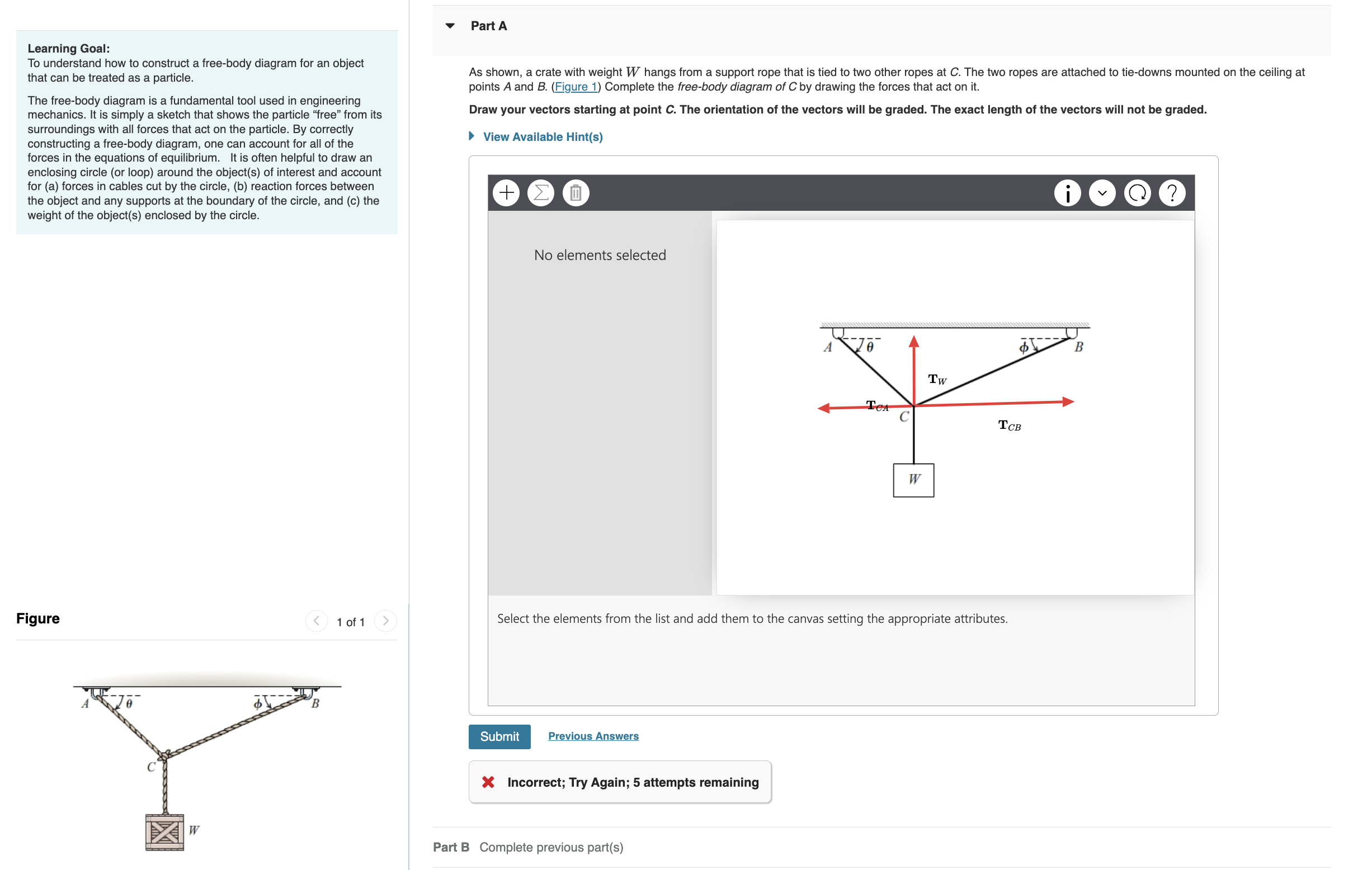Answered step by step
Verified Expert Solution
Question
1 Approved Answer
TranscribedText: Part A Learning Goal: To understand how to construct a free-body diagram for an object that can be treated as a particle. As shown,

Part A Learning Goal: To understand how to construct a free-body diagram for an object that can be treated as a particle. The free-body diagram is a fundamental tool used in engineering mechanics. It is simply a sketch that shows the particle "free" from its surroundings with all forces that act on the particle. By correctly constructing a free-body diagram, one can account for all of the forces in the equations of equilibrium. It is often helpful to draw an enclosing circle (or loop) around the object(s) of interest and account for (a) forces in cables cut by the circle, (b) reaction forces between the object and any supports at the boundary of the circle, and (c) the weight of the object(s) enclosed by the circle. As shown, a crate with weight W hangs from a support rope that is tied to two other ropes at C. The two ropes are attached to tie-downs mounted on the ceiling at points A and B. (Figure 1) Complete the free-body diagram of C by drawing the forces that act on it. Draw your vectors starting at point C. The orientation of the vectors will be graded. The exact length of the vectors will not be graded. View Available Hint(s) + ? Figure 1 of 1 B No elements selected A 10 TCA W Tw TCB Select the elements from the list and add them to the canvas setting the appropriate attributes. Submit Previous Answers Incorrect; Try Again; 5 attempts remaining W Part B Complete previous part(s) B
Step by Step Solution
There are 3 Steps involved in it
Step: 1

Get Instant Access to Expert-Tailored Solutions
See step-by-step solutions with expert insights and AI powered tools for academic success
Step: 2

Step: 3

Ace Your Homework with AI
Get the answers you need in no time with our AI-driven, step-by-step assistance
Get Started


